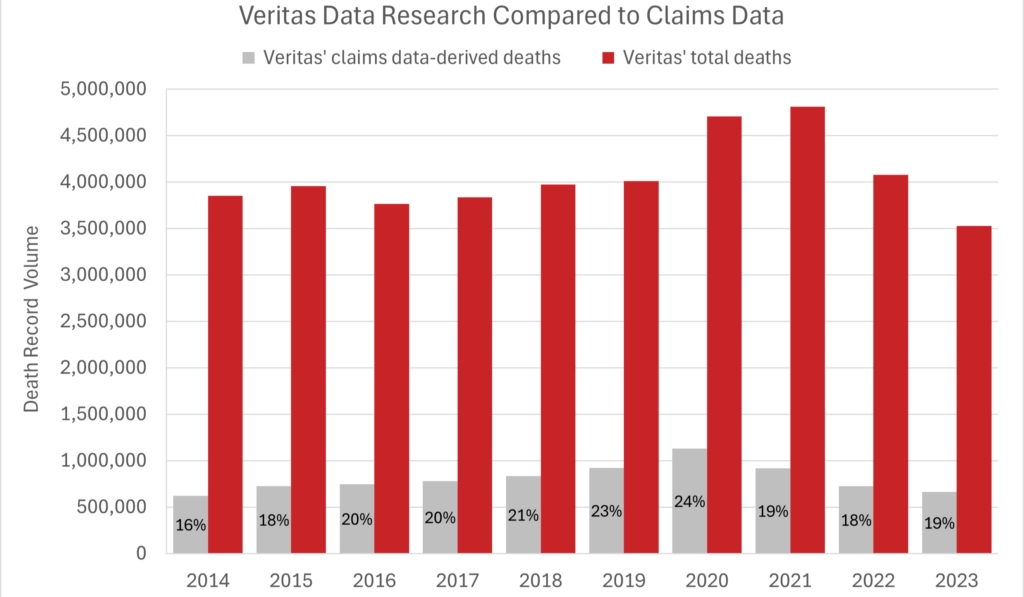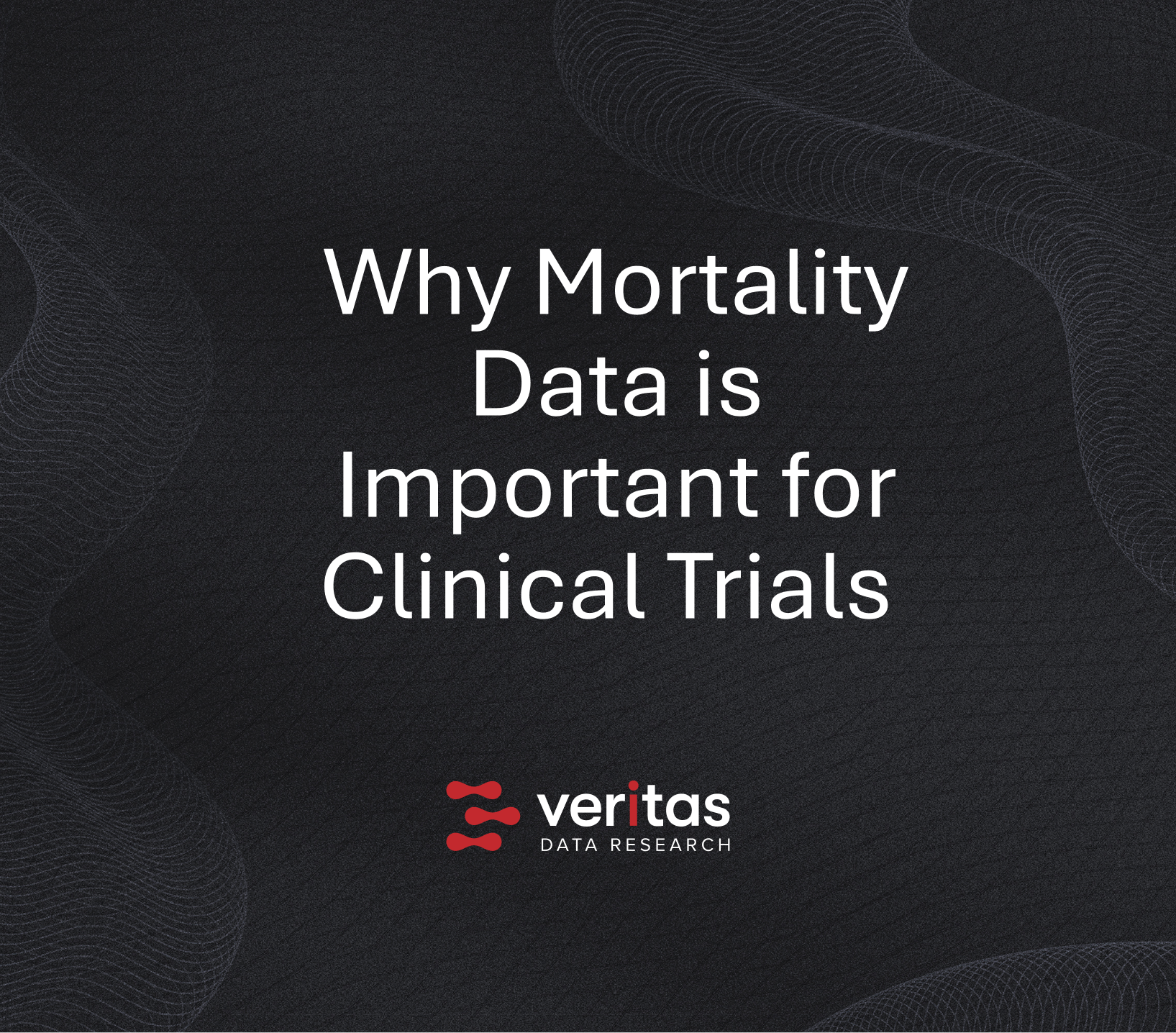Many Providers and Payers use their own claims data to understand the mortality rates in their population, but don’t realize that claims are a highly incomplete source of mortality data. Mortality information is generally recorded in a claim when a patient dies during inpatient care (including hospice). The claim for that event contains specific codes for expired patients, which are often discharge codes for expiry and occurrence codes for the date of death. However, most patients do not expire in a healthcare setting – on average, only 20% of deaths are available in national claims data (see the graph below).
Covered entities need to augment their mortality information with external sources if they want to better understand the health outcomes of their patients, remove deceased individuals from their patient communications, and design better population health models and risk-based interventions. A recent study from UCLA confirms this issue, finding that 1 in 5 seriously ill patients believed to be alive in their medical records were actually deceased. UCLA study: https://www.uclahealth.org/news/release/about-20-patients-listed-alive-their-electronic-health
At Veritas, we are committed to providing this missing information in an accessible and affordable manner. If you are interested in learning more about our mortality data, please reach out to us via sales@veritasdataresearch.com or message us on our website.

Request More Information
Speak to a Veritas expert to learn how subscribing to our data can make your organization’s operations and analytics more effective.





